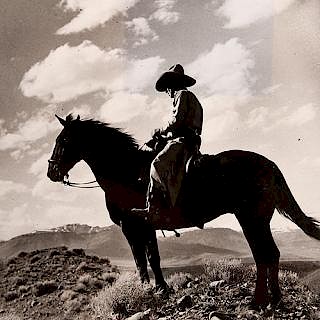History of the American Fauna, 3 Vols., ca 1877
About Seller
6270 Este Ave.
Cincinnati , OH 45232
United States
With offices in Cincinnati, Cleveland and Denver, Cowan’s holds over 40 auctions each year, with annual sales exceeding $16M. We reach buyers around the globe, and take pride in our reputation for integrity, customer service and great results. A full-service house, Cowan’s Auctions specializes in Am...Read more
Two ways to bid:
- Leave a max absentee bid and the platform will bid on your behalf up to your maximum bid during the live auction.
- Bid live during the auction and your bids will be submitted real-time to the auctioneer.
Bid Increments
| Price | Bid Increment |
|---|---|
| $0 | $25 |
| $500 | $50 |
| $1,000 | $100 |
| $2,000 | $250 |
| $5,000 | $500 |
| $10,000 | $1,000 |
| $20,000 | $2,500 |
| $50,000 | $5,000 |
| $100,000 | $10,000 |
About Auction
Jun 12, 2015 - Jun 13, 2015
Cowan's Auctions dawnie@cowans.com
- Lot Description
Holder, Joseph B. (1824-1888). History of the American Fauna. And a General Natural History of the World: Being a Popular Account of the Structure, Habits, and Classification of the Various Departments of the Animal Kingdom, Quadrupeds, Birds, Reptiles, Fishes, Shells, and Insects, Including the Insects Destructive to Agriculture. By Sir John Richardson, William S. Dallas and T. Spencer Corbold, Assisted by William Baird and Adam White. New York: Virtue & Yorston, n.d., ca 1877 (WorldCat), 3 vols. 4to, 3/4 brown morocco over marbled paper boards, matching marbled endpapers. All volumes have hundreds of illustrations within the text, plus separate additional steel engraved plates, some colored, five spine bands, top edges gilt, gilt spine lettering. Vol. 1, 65 plates (numbering is not consecutive), including frontis (numbered as Plate 12), 28 of which are colored, 446 numb. pp. Vol. 2, 69 plates, five of which are colored (frontis is plate 2), 406pp. Vol. 3, 9 plates, 4 of which are colored, including frontis which is Plate VII; volume numbered [i] - ccxc (290).
Inside each ffep is early owner's identification: W.W. Smith / Trinity Hall / Washington Pa. / NY, Nov. 27, 1891. Bottom page edges of all three also with red stamp "W.W. Smith." William Wrenshall Smith opened his home as Trinity Hall Academy in 1879 as a boys' military school. U.S. Grant Smith assumed control in 1895, after which there was a waiting list for enrollment. The academy closed in 1906.
According to his obituary in the New York Times (1 March 1888) Joseph B. Holder (1824-1888) was educated at Harvard Medical School and began practicing medicine in his hometown of Lynn, MA. Through the influence of Profs. Agassiz and Baird he received an appointment as a naturalist and physician to the Dry Tortugas, where he began studying invertebrates. He began publishing on invertebrates, and zoology in general, shortly after. He served as an Army Surgeon during the Civil War, and in 1870 went to New York as Curator of Invertebrate Zoology at the American Museum of Natural History. He was also a member of all of the other prestigious associations of the day: New York Academy of Sciences, Society of American Naturalists, American Ornithological Union, the Harvard Club, the Linnaean Society of New York. In addition to this "Fauna Americana," he continued making contributions to various magazines such as Harper's, Century, Scientific American, and others.Slight shelf wear, showing most along the lower edges of the bottom corner "tabs." Vol. 3 has a dark stain at top of a few free front pages, not affecting any plates or text. Overall in excellent condition.Condition
- Shipping Info
-
SHIPPING. At the request of the buyer, Cowan's will authorize the shipment of purchased items. Shipments usually occur within two weeks after payment has been received. Shipment is generally made via UPS Ground service. Unless buyer gives special instructions, the shipping method shall be at the sole discretion of Cowan's Auctions, Inc.. Cowan's is in no way responsible for the acts or omissions of independent handlers, packers or shippers of purchased items or for any loss, damage or delay from the packing or shipping of any property.
-
- Buyer's Premium



 EUR
EUR CAD
CAD AUD
AUD GBP
GBP MXN
MXN HKD
HKD CNY
CNY MYR
MYR SEK
SEK SGD
SGD CHF
CHF THB
THB














